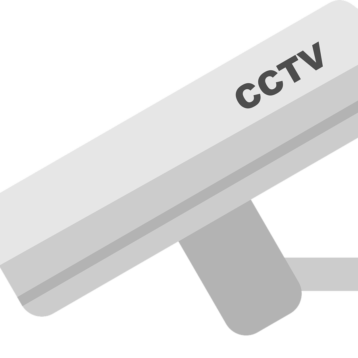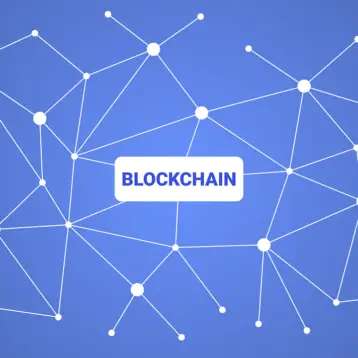
The Internet of Things (IoT) has the potential to revolutionize the way we live and work, and one area where it could have a significant impact is the environment. From agriculture to transportation, connected devices are enabling more efficient and sustainable use of resources. In fact, global spending on IoT is estimated at $1.2 trillion as of 2022, according to a report from Gartner.
However, as IoT investments and deployments grow in importance, so too do concerns about security. The interconnected nature of the IoT means that a breach or hack in one device could have far-reaching consequences. Thus, the environmental impact of such an event could be significant.
Vulnerabilities in IoT systems due to design
There are a number of design issues that can lead to security vulnerabilities in IoT devices. One common issue is the lack of proper input validation and validation of data types, which can allow an attacker to send specially crafted input to a device in an attempt to cause it to crash or execute arbitrary code.
One common issue is the lack of proper authentication and access controls. Many IoT devices are designed with minimal or no security features, making them easy targets for attackers who can gain unauthorized access to the device and its associated data.
In addition, IoT devices often have limited memory and processing power, and this makes it difficult for developers to incorporate robust security measures such as encryption and complex authentication mechanisms. In this context, one common concern is the use after free vulnerability, which can be exploited by attackers to execute malicious code.
When memory is freed, it’s often not immediately overwritten, so it may still contain data from previous usage, an attacker could use that to execute malicious code by manipulating this freed up memory. This type of attack is particularly dangerous because it can be used to bypass security mechanisms such as firewalls and intrusion detection systems that are designed to prevent unauthorized code execution.
It’s also possible for attackers to exploit a use-after-free vulnerability by tricking the program into freeing an object that is still in use. This can cause other memory errors, like heap overflow, which may lead to remote code execution, information leakage, and other types of vulnerabilities. This underscores the importance of properly handling memory allocation and deallocation.
Another common concern in the IoT industry is that most devices have either no mechanism for updating their software or their firmware, or these mechanisms are not user-friendly or easily discoverable, which results in IoT devices being vulnerable to known vulnerabilities for a long time.
Inadequate security testing is another issue, as many IoT device manufacturers do not perform comprehensive security testing of their devices prior to release, which can result in unknown vulnerabilities being present in the final product.
Finally, poor communication security and poor network security are common issues found in IoT devices, such as weak encryption, poor key management, and lack of secure communications protocols between devices and servers.
Real-world impact of vulnerabilities
IoT vulnerabilities can result in a wide range of real-world impacts, from minor disruptions to serious security breaches. Some examples of the types of incidents that show just how vulnerable we are to such breaches are as follows:
For one, the Triton class of malware has been utilized to target critical infrastructure like power plants and industrial systems, in what is known as the Trisis vulnerability. This has resulted in hackers bringing down power plants and industrial operations in the Middle East, South Korea, and Ukraine in the past.
More recently, in 2022, it was discovered that an ongoing vulnerability in electrical relay systems by Schneider Electric could result in attackers taking down power grids, with resultant environmental impact. Similar cases of attacks on critical infrastructure have already happened as part of the ongoing and escalating conflict between Ukraine and Russia, wherein power plants have been targeted and were successfully brought offline through cyber attacks.
Disaster imagination: IoT as a vector for attacks
As seen in the examples above, critical and industrial infrastructure have not been spared as attack targets. One potentially negative scenario that could arise from issues with the IoT is the unauthorized release of hazardous materials. For example, consider a connected chemical storage facility with weak security measures. If an attacker were to gain access to the facility’s control systems, they could potentially release hazardous chemicals, leading to environmental contamination and potential harm to human health.
Another potential scenario is the disruption of critical infrastructure, such as power plants or water treatment facilities. If an attacker were to gain access to the control systems of these facilities, they could disrupt the flow of essential services and potentially cause environmental damage. For example, a cyber attack on a power plant could lead to the release of greenhouse gases or the disruption of the power grid, while a hack of a water treatment facility could lead to the contamination of drinking water.
Finally, the theft of sensitive data by an attacker could have environmental consequences if that data relates to environmental protection or sustainability. For example, the theft of research data on the environmental impacts of a particular product could be used to undermine efforts to reduce its negative impact on the environment.
These are just a few examples of the potential negative scenarios that could arise from issues with IoT, and the impacts that could result. It is important to consider the potential risks and take steps to secure the IoT to prevent such scenarios from occurring.
Establishing strong regulations and standards for IoT security
Governments and industry groups can also play a role in promoting the responsible use of IoT through the establishment of regulations and standards. The European Union’s General Data Protection Regulation (GDPR), for example, provides guidelines for the collection and use of personal data, including data collected by connected devices. The ISO 14000 series of environmental management standards offers a framework for organizations to manage their environmental responsibilities, including the use of IoT.
By addressing security concerns and establishing strong regulations and standards, we can maximize the potential of IoT to benefit the environment and support sustainable development. From agriculture to transportation, connected devices have the potential to enable more efficient and sustainable use of resources. By taking a responsible approach to the IoT, we can ensure that these benefits are realized.
But the benefits of the IoT for the environment go beyond resource efficiency and waste reduction. Smart agriculture, for example, can improve crop yields and reduce the use of pesticides and fertilizers through the use of connected sensors and precision farming techniques. In transportation, connected vehicles and smart traffic systems can reduce emissions and improve fuel efficiency, while smart grids can optimize energy production and distribution.
The takeaway
IoT is not without its challenges. In addition to security concerns, there are also issues around privacy, cost, and the potential for job displacement. The biggest concern at the moment is cyber security, given how IoT has exponentially increased attack surfaces and made critical infratsructure more available for attackers. However, with careful planning and the adoption of responsible practices, IoT has the potential to bring about significant benefits for the environment and for society as a whole.
As IoT continues to evolve and expand, it will be important to stay informed about the latest developments and to consider the potential impacts on business, industry, society, and the environment. By taking a forward-looking approach to the IoT and considering the long-term implications of its adoption, we can ensure that it is used in a way that benefits both the environment and society.










